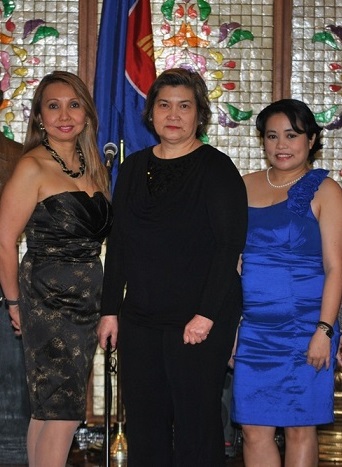Family a strong influence on FilAms’ travel decisions

By Zeny Pallugna
This research, “A Tourism Destination Marketing Model for the Philippines,” was conducted to fulfill the author’s academic requirement for a PhD from the Philippine Women’s University in Manila. The author, Azucena Cinco Pallugna, Ph.D., is currently a Foreign Service Tourism Officer of the Philippine Department of Tourism in San Francisco.
Profile of Filipino-American travelers
Many Filipino-American travelers profiled in the study are women (50.6 percent), ages 25-34 (45 percent), college graduates (41.7 percent), and working full-time (60 percent). They have an annual household income ranging from $50,000 to $74,000, which is within the ambit of the median U.S. household income of $67,521. One-third of those profiled in the study (34.7%) are residents of California, while the rest are from New York, Illinois, and Texas.
Travelers’ customer journey
Using Kotler’s 5A’s (aware, appeal, ask, act, and advocate) to understanding the Filipino-American travelers’ customer path to purchase and leverage on the power of their connectivity and advocacy, data reveal that Filipino-American travelers somewhat agree that: 1) they look back at their old holiday photos on social media or are stuck at home thinking about their planned or canceled holiday; they share the stories, photos, and travel experiences with their family and friends through social media; and 3) they search online for flights, hotels, and car rentals and either book their trip online or through a preferred travel agent.


The study revealed that Filipino-American travelers learn and become attracted to the destination through their family and friends on social media (e.g., Facebook and Instagram), travel advertisements, travel blogs, and destination videos, while recalling their past experiences. All-inclusive travel deals, cheap air tickets, and good tour package deals offered by their travel agents are not appealing to them. However, their travel decisions are neither influenced by their travel agent nor friends. It came from their outer and others’ influences, such as social media posts of family and friends, travel advertisements, travel blogs, and destination videos.
Their own influence comes from their past experiences in and travels to the Philippines or other destinations, personal judgment, and evaluation of the destination they are planning to visit. It also validates Kotler’s et al. (2014) claim that today’s customers rely heavily on the recommendation of others or others’ influence (from their social circle of friends and family and online reviews) due to information overload through multiple channels exposure.
The Philippine brand
Since Filipino-American travelers have a strong awareness of the country, they are willing to recommend the Philippine brand because of its high reputation as an outdoor, nature-based, beach, and tropical destination with very satisfactory quality of services, activities, and amenities. Their affinity to the Philippine brand is also vital because of their generational roots, having friends and relatives in the Philippines, including repeat visits. Their curiosity lies in the country’s new infrastructure development, attractions, and activities. It means that the Philippine brand accomplishes a perfect Brand Advocacy Ratio (BAR) score of 1 (aware = advocacy). Essentially, the BAR represents the Filipino-American travelers’ willingness to recommend the Philippines brand as a destination to their friends and relatives. The Philippines’ brand appeal is so strong that everyone attracted to the Philippine brand ends up buying it (appeal = act).
There is no need for Filipino-Americans to research further, reflecting a precise positioning of the Philippine brand as a destination and identifying the right level of curiosity and affinity. They are well aware and knowledgeable of the Philippine destination’s product features, branding, pricing, promotions, and advertising; They turn to their social circle of friends and families for inspiration and advice on where to go and what to visit while in the Philippines.


(C) The FilAm 2022












